Power Your Home With Clean, Sustainable Solar Energy
Start saving on electricity bills and become energy independent with VGROW POWER’s custom residential Solar Rooftop solutions

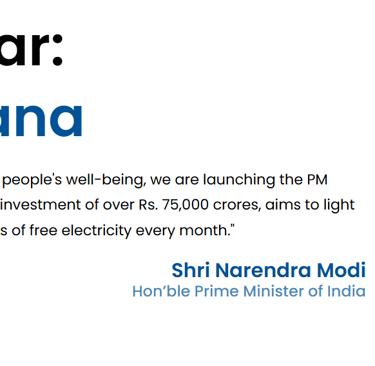
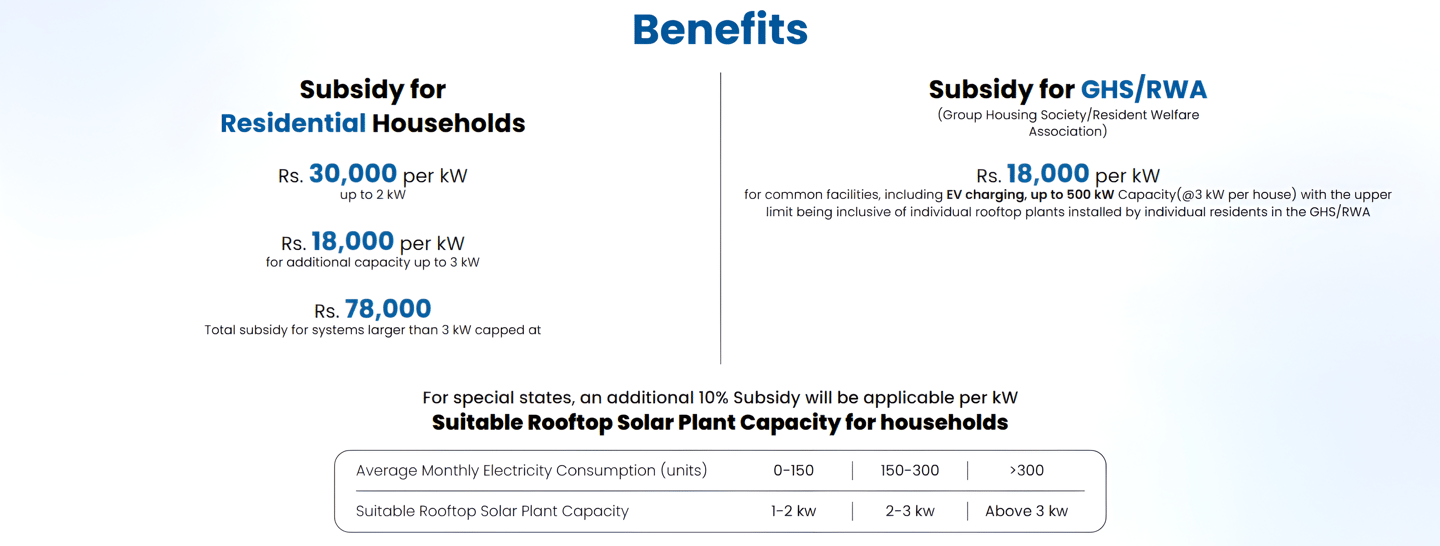

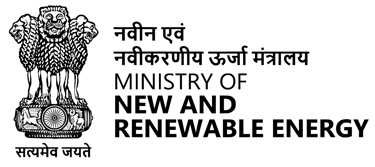

PM Surya Ghar:
Muft Bijli Yojana
"In order to further sustainable development and people's well-being, we are launching the PM Surya Ghar: Muft Bijli Yojana. This project, with an investment of over Rs. 75,000 crores, aims to light up 1 crore households by providing up to 300 units of free electricity every month."
Shri Narendra Modi
Hon’ble Prime Minister of India
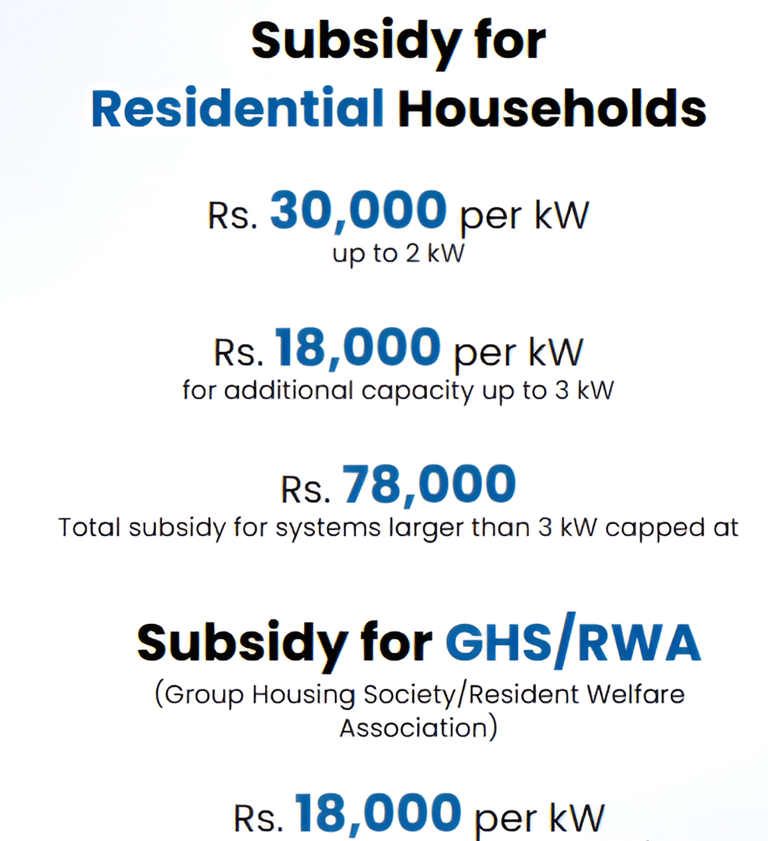



for common facilities, including EV charging, up to 500 kW Capacity (@3 kW per house) with the upper limit being inclusive of individual rooftop plants installed by individual residents in the GHS/RWA
What is a Residential Solar Rooftop?
A residential solar rooftop system is a setup of solar panels installed on your home’s rooftop to capture sunlight and convert it into electricity. These systems are ideal for homeowners looking to reduce their electricity bills and switch to a sustainable energy source. At VGROW POWER, we offer end-to-end solar solutions tailored to your home’s size, structure, and energy needs.
Includes: Solar panels, inverter, net metering, structure and wiring fully installed and commissioned.
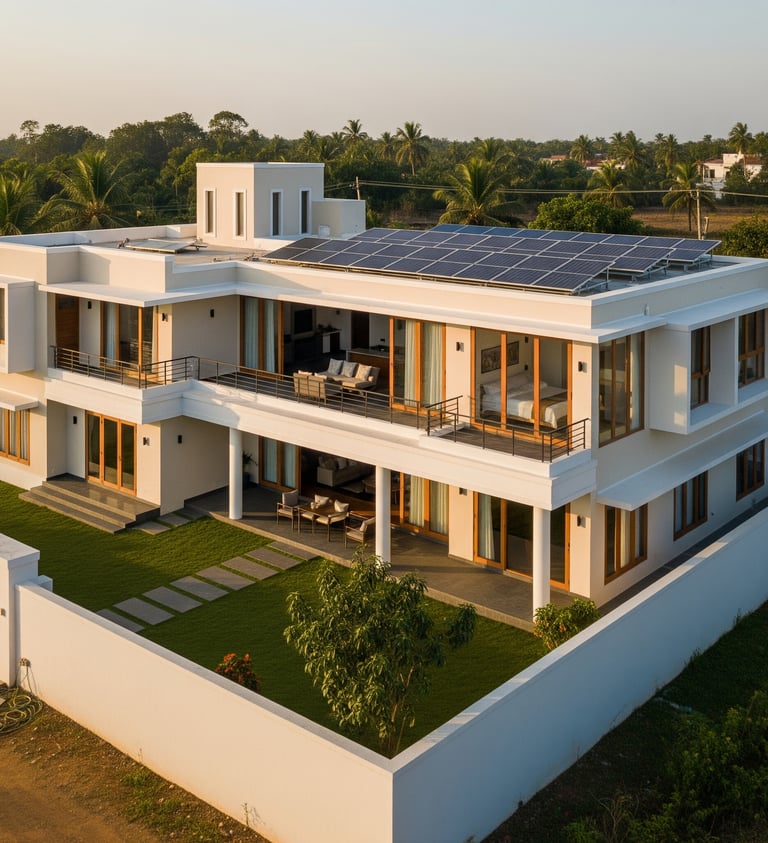

Our Residential Solar Services
On-Grid Rooftop Solar Systems
Hybrid Solar Systems with Battery Backup
Off-Grid Systems for Remote Homes
Net Metering Support
Smart Monitoring & App Integration
System Expansion & Upgrade Services
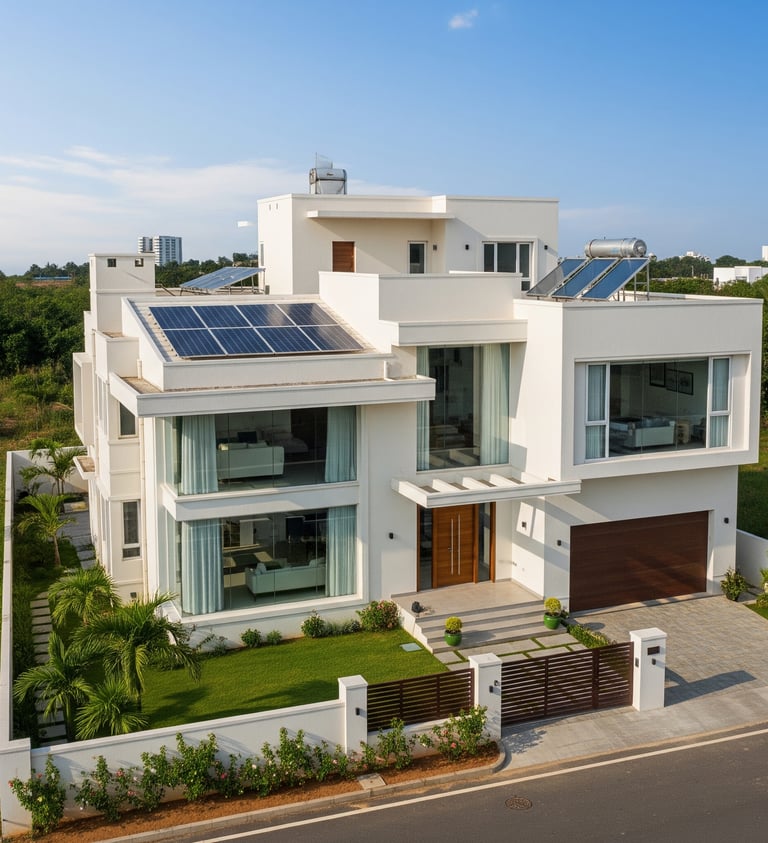

Why Choose Solar for Your Home?
Save Big on Electricity Bills
Slash your monthly EB bills by up to 90% and enjoy long-term savings
Government Subsidies
Up to 78,000 subsidy for residential solar under PM SURYA GHAR scheme
Scalable for Future Needs
Easily expand your system if you add new appliances or build extra rooms
Remote Monitoring
Track your daily generation and savings on your phone through apps
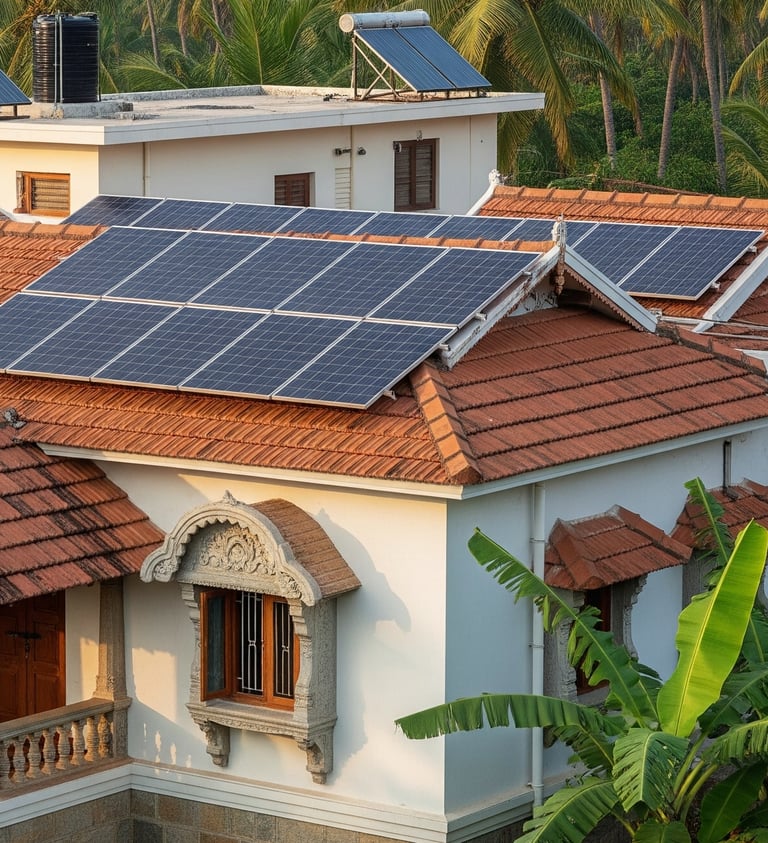

How Does a Residential Solar Rooftop Work?
2. Off-Grid Solar System
This system is completely independent and does not connect to the grid. It uses batteries to store energy.
Solar panels generate electricity during the day.
Solar panels charge a battery bank through the inverter.
Stored power is used during the day and night.
No grid electricity is used.
Best For: Remote areas with no grid connection or frequent power cuts.
Note: Slightly higher investment due to battery costs.
1. On-Grid Solar System
This is the most common and cost-effective system. It connects directly to the power grid.
Solar panels generate electricity during the day.
Inverter converts it to usable AC power.
All solar units are exported to EB.
Whenever you use electricity in your home, it is imported from EB as usual.
At the end of the billing cycle, EB will calculate:
Units Exported by your solar system
Units Imported (used by your home)
Excess units will be in your bill credits.
Best For: Homes with reliable grid power.
Subsidy: Eligible for PM Surya Ghar: Muft Bijli Yojana government subsidies.
3. Hybrid Solar System
A combination of on-grid and off-grid systems.
Solar power is used during the day.
Extra energy is stored in batteries.
Additional excess is sent to the grid.
In case of power cuts, the battery supplies backup power.
Best For: Homes that want both savings and backup during outages.
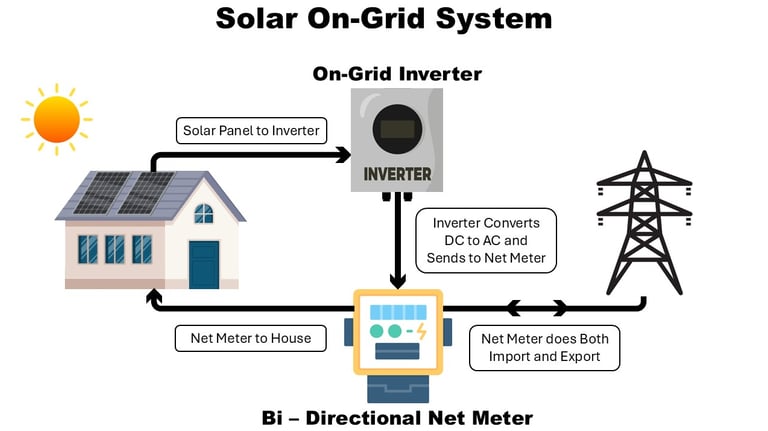

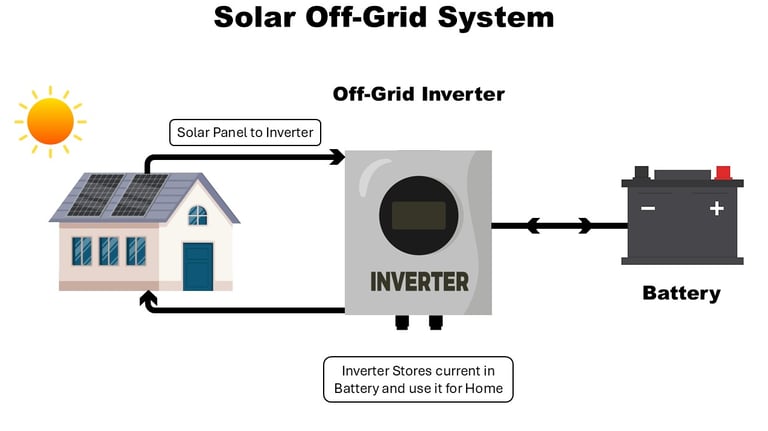


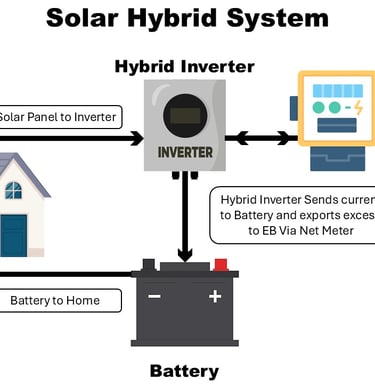
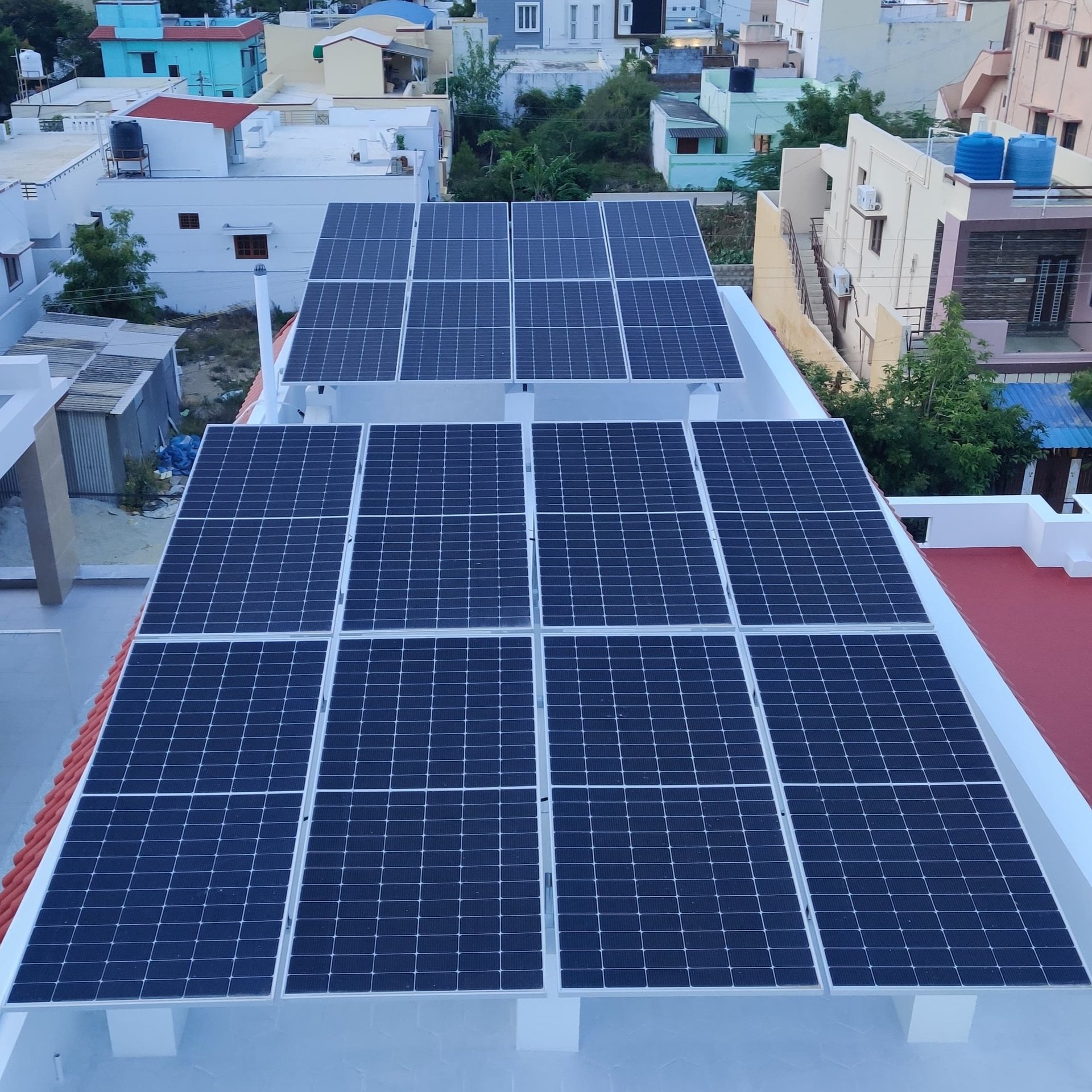
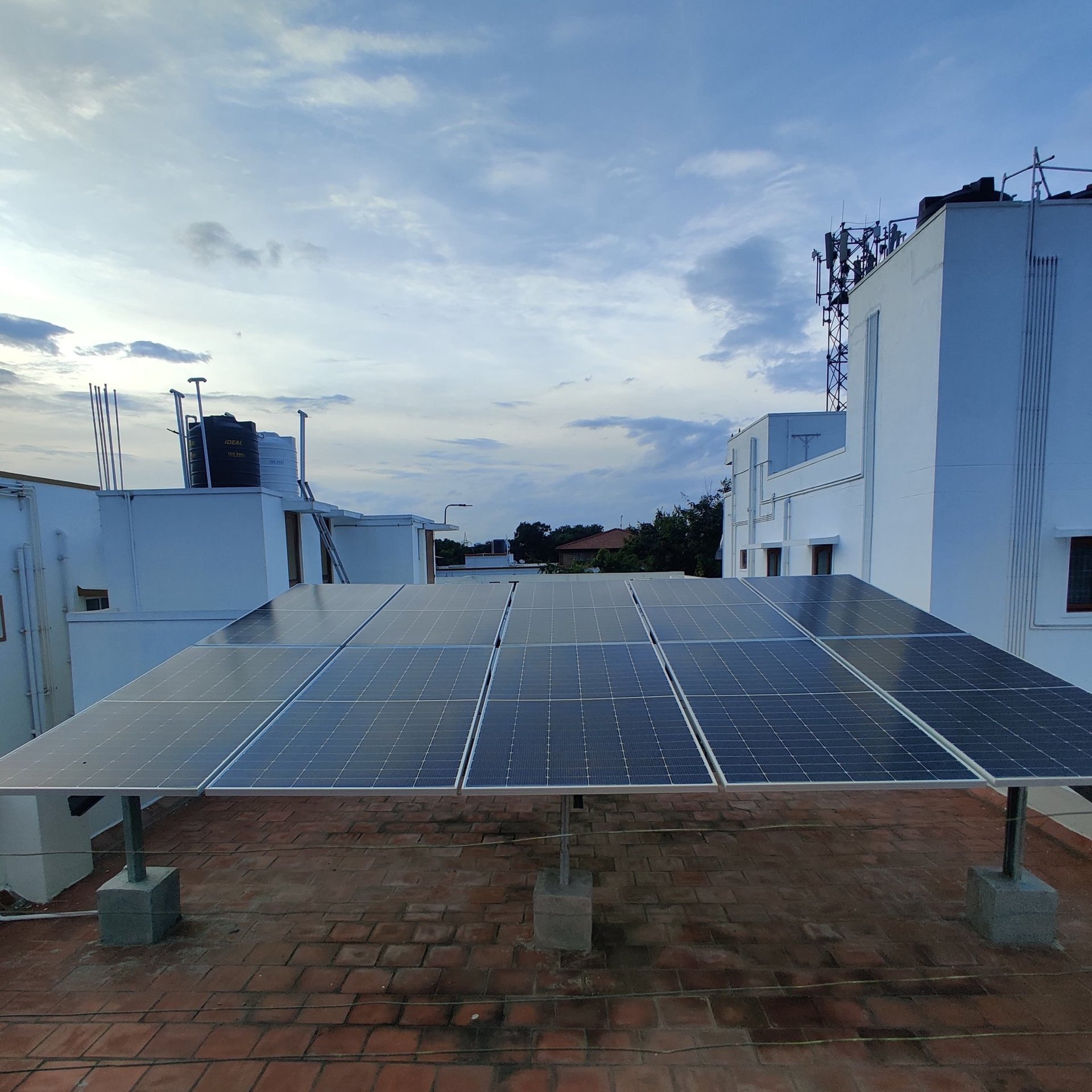
FREQUENTLY ASKED QUESTIONS -
RESIDENTIAL SOLAR
1.What is MNRE?
MNRE stands for the Ministry of New and Renewable Energy, the Government of India body that promotes renewable energy projects like rooftop solar systems across India.
3.How do I apply for MNRE solar subsidy?
Register with your TNEB connection number
Choose an MNRE-registered vendor like VGROW POWER
Submit your application, install the system, and get it approved
Receive your subsidy amount via Direct Benefit Transfer (DBT)
4.Who is eligible for the MNRE solar rooftop subsidy?
Only residential users (individual homes or housing societies) are eligible.
Commercial, industrial, or institutional buildings are NOT eligible.
5.How does net metering work with an MNRE-approved system?
Net metering allows you to export solar energy to the grid and import electricity.
EB calculates the net usage (Imported - Exported) and bills you only for the difference.
2.Is there a subsidy for installing solar rooftop systems?
Here’s the current structure
1 KW: ₹30,000
2 KW: ₹60,000
3-10 KW: ₹78,000
Subsidy is transferred directly to your bank account after system inspection and approval.
8.Can I install solar on a flat roof?
Yes! VGROW POWER provides custom GI structures for both flat and sloped rooftops. We ensure correct tilt and safety for maximum efficiency.
9.What is the Warranty period of Solar?
Solar Panels: 25+ years
Inverter: 7–10 years
Battery (if any): 5–7 years
10.What is the maintenance required for residential solar panels?
Solar panels are low maintenance. Basic cleaning once every 15–30 days and a yearly system check is enough. VGROW POWER offers AMC (Annual Maintenance Contract) services for your convenience.
6.What is a residential solar rooftop system?
It is a system where solar panels are installed on your home’s rooftop to generate electricity using sunlight. It helps reduce your dependency on EB and saves you money on electricity bills.
7.Will solar panels power my house during a power cut?
If you have an on-grid system, it will not work during a power cut (for safety).
If you install a hybrid or off-grid system, solar can power your house even during outages using battery backup.
